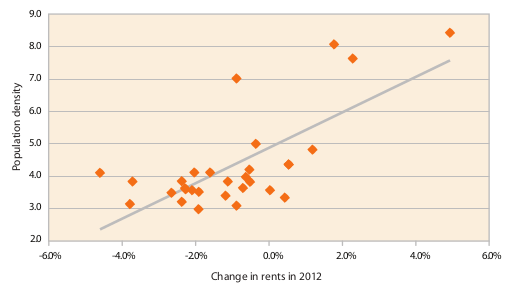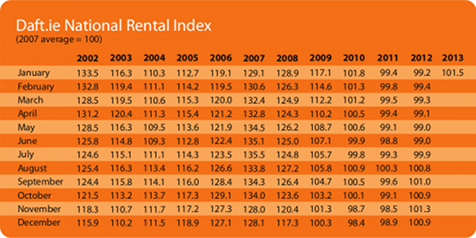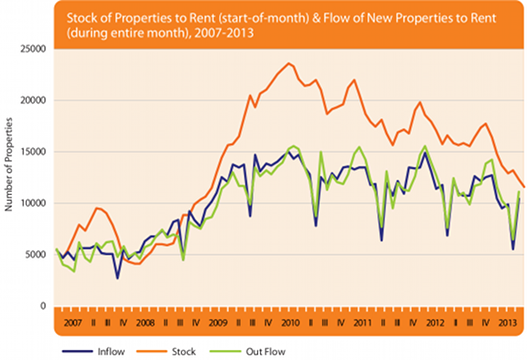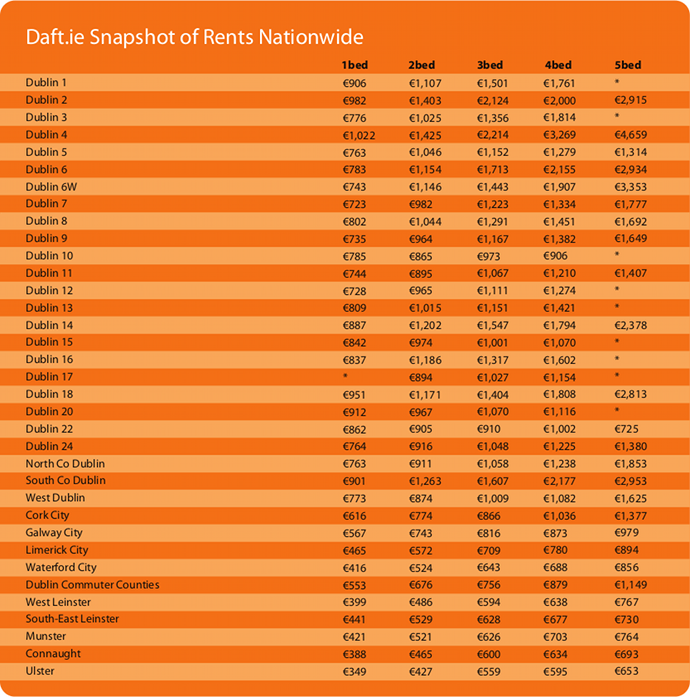Rent inflation and the pull of cities
Daft Reports
- Ronan Lyons (House Price, Q1 2024)
- Ronan Lyons (Rental Price, Q4 2023)
- Ronan Lyons (House Price, Q4 2023)
- Ronan Lyons (Rental Price, Q3 2023)
- Ronan Lyons (House Price, Q3 2023)
- Ronan Lyons (Rental Price, Q2 2023)
- Ronan Lyons (House Price, Q2 2023)
- Ronan Lyons (Rental Price, Q1 2023)
- Ronan Lyons (House Price, Q1 2023)
- Ronan Lyons (Rental Price, Q4 2022)
- Ronan Lyons (House Price, Q4 2022)
- Ronan Lyons (Rental Price, Q3 2022)
- Ronan Lyons (House Price, Q3 2022)
- Ronan Lyons (Rental Price, Q2 2022)
- Ronan Lyons (House Price, Q2 2022)
- Ronan Lyons (Rental Price, Q1 2022)
- Ronan Lyons (House Price, Q1 2022)
- Ronan Lyons (Rental, Q4 2021)
- Ronan Lyons (House Price, Q4 2021)
- Ronan Lyons (Rental, Q3 2021)
- Ronan Lyons (House Price, Q3 2021)
- Ronan Lyons (Rental, Q2 2021)
- Ronan Lyons (House Price, Q2 2021)
- Ronan Lyons (Rental, Q1 2021)
- Ronan Lyons (House Price, Q1 2021)
- Ronan Lyons (Rental, Q4 2020)
- Ronan Lyons (House Price, Q4 2020)
- Ronan Lyons (Wealth, H2 2020)
- Ronan Lyons (Rental, Q3 2020)
- Ronan Lyons (House Price, Q3 2020)
- Ronan Lyons (Housing, July 2020)
- Ronan Lyons (Housing, June 2020)
- Ronan Lyons (Housing, May 2020)
- Ronan Lyons (Rental, Q1 2020)
- Ronan Lyons (House Price, Q1 2020)
- Ronan Lyons (Rental, Q4 2019)
- Ronan Lyons (House Price, Q4 2019)
- Ronan Lyons (Wealth, H2 2019)
- Ronan Lyons (Rental, Q3 2019)
- Ronan Lyons (House Price, Q3 2019)
- Pierre Yimbog (Rental, Q2 2019)
- Ronan Lyons (House Price, Q2 2019)
- Ronan Lyons (Wealth, H1 2019)
- Ronan Lyons (Rental, Q1 2019)
- Ronan Lyons (House Price, Q1 2019)
- Ronan Lyons (Rental, Q4 2018)
- Ronan Lyons (House Price, Q4 2018)
- Ronan Lyons (Wealth, H2 2018)
- Ronan Lyons (Rental, Q3 2018)
- Ronan Lyons (House Price, Q3 2018)
- Shane De Rís (Rental, Q2 2018)
- Ronan Lyons (House Price, Q2 2018)
- Ronan Lyons (Wealth, 2018)
- Ronan Lyons (Rental, Q1 2018)
- Ronan Lyons (House Price, Q1 2018)
- Ronan Lyons (Rental, Q4 2017)
- Ronan Lyons (House Price, Q4 2017)
- Ronan Lyons (Rental, Q3 2017)
- Ronan Lyons (House Price, Q3 2017)
- Katie Ascough (Rental, Q2 2017)
- Ronan Lyons (Wealth, 2017)
- Ronan Lyons (House Price, Q2 2017)
- Ronan Lyons (Rental, Q1 2017)
- Ronan Lyons (House Price, Q1 2017)
- Ronan Lyons (Rental, Q4 2016)
- Ronan Lyons (House Price, Q4 2016)
- Ronan Lyons (Rental, Q3 2016)
- Ronan Lyons (House Price, Q3 2016)
- Ronan Lyons (School Report, 2016)
- Conor Viscardi (Rental, Q2 2016)
- Ronan Lyons (Rail Report, 2016)
- Ronan Lyons (House Price, Q2 2016)
- Ronan Lyons (Rental, Q1 2016)
- Ronan Lyons (House Price, Q1 2016)
- Ronan Lyons (Rental, Q4 2015)
- Ronan Lyons (House Price, Q4 2015)
- Ronan Lyons (Rental, Q3 2015)
- Ronan Lyons (House Price, Q3 2015)
- Marcus O'Halloran (Rental, Q2 2015)
- Ronan Lyons (House Price, Q2 2015)
- Ronan Lyons (Rental, Q1 2015)
- Ronan Lyons (House Price, Q1 2015)
- Ronan Lyons (Rental, Q4 2014)
- Ronan Lyons (House Price, Q4 2014)
- Ronan Lyons (Rental, Q3 2014)
- Ronan Lyons (House Price, Q3 2014)
- Domhnall McGlacken-Byrne (Rental, Q2 2014)
- Ronan Lyons (House Price, Q2 2014)
- Ronan Lyons (Rental, Q1 2014)
- Ronan Lyons (House Price, Q1 2014)
- Ronan Lyons (Rental, Q4 2013)
- Ronan Lyons (House Price, Q4 2013)
- Ronan Lyons (Rental, Q3 2013)
- Ronan Lyons (House Price, Q3 2013)
- Ronan Lyons (Rental, Q2 2013)
- Ronan Lyons (House Price, Q2 2013)
- Ronan Lyons (Rental, Q1 2013)
- Ronan Lyons (House Price, Q1 2013)
- Ronan Lyons (Rental, Q4 2012)
- Ronan Lyons (House Price, Q4 2012)
- Lorcan Sirr (Rental, Q3 2012)
- Padraic Kenna (House Price, Q3 2012)
- John Logue (Rental, Q2 2012)
- Ronan Lyons (House Price, Q2 2012)
- Barry O'Leary (Rental, Q1 2012)
- Seamus Coffey (House Price, Q1 2012)
- Joan Burton (Rental, Q4 2011)
- Ronan Lyons (House Price, Q4 2011)
- Philip O'Sullivan (Rental, Q3 2011)
- Sheila O'Flanagan (House Price, Q3 2011)
- Rachel Breslin (Rental, Q2 2011)
- Constantin Gurdgiev (House Price, Q2 2011)
- Cormac Lucey (Rental, Q1 2011)
- Eoin Fahy (House Price, Q1 2011)
- Lorcan Roche Kelly (Rental, Q4 2010)
- Ronan Lyons (House Price, Q4 2010)
- John Fitzgerald (Rental, Q3 2010)
- Patrick Koucheravy (House Price, Q3 2010)
- Gary Redmond (Rental, Q2 2010)
- Jim Power (House Price, Q2 2010)
- Jill Kerby (Rental, Q1 2010)
- Brian Lucey (House Price, Q1 2010)
- Michael Taft (Rental, Q4 2009)
- Alan McQuaid (House Price, Q4 2009)
- Dr. Charles J. Larkin (Rental, Q3 2009)
- Emer O'Siochru (House Price, Q3 2009)
- Ronan Lyons (Rental, Q2 2009)
- Oliver Gilvarry (House Price, Q2 2009)
- Brian Devine (Rental, Q1 2009)
- Dr. Liam Delaney (House Price, Q1 2009)
- Gerard O'Neill (Rental, Q4 2008)
- Ronan Lyons (House Price, Q4 2008)
- Dr. Stephen Kinsella (Rental, Q3 2008)
- Moore McDowell (House Price, Q3 2008)
- Shane Kelly (Rental, Q2 2008)
- Fergal O'Brien (House Price, Q2 2008)
- Eoin O'Sullivan (Rental, Q1 2008)
- Dermot O'Leary (House Price, Q1 2008)
- Dan O'Brien (Rental, Q4 2007)
- Frances Ruane (House Price, Q4 2007)
- John McCartney (Rental, Q3 2007)
- Ronnie O'Toole (House Price, Q3 2007)
- Ronan Lyons (Rental, Q2 2007)
- Constantin Gurdgiev (House Price, Q2 2007)
- Fintan McNamara (Rental, Q1 2007)
- Rossa White (House Price, Q1 2007)
- Geoff Tucker (Rental, Q4 2006)
- Damien Kiberd (House Price, Q4 2006)
- Pat McArdle (House Price, Q3 2006)
- Marc Coleman (House Price, Q2 2006)
- David Duffy (House Price, Q1 2006)
- Austin Hughes (House Price, Q4 2005)
- David McWilliams (House Price, Q2 2005)

11th Feb 2013
Ronan Lyons, Daft's in-house economist, commenting on the latest Daft research on the Irish property market.
Rent inflation and the pull of cities
For much of the past five years, the focus on the negative consequences of falling properties values has been so pervasive that the fact that accommodation is a cost - and rising costs are a bad thing in general - has largely been forgotten in public discourse. It is a point that policymakers forget at their peril, though. Certainly, from the point of view of those who bought between 2003 and 2008, the fact that property values have fallen by more than 50% is terrible news, as it means their wealth has been halved, while their liabilities have remained constant.
But from the point of view of the generation that is yet to buy, those in their 20s and early 30s, the return of property prices to more sustainable levels is hugely welcome. And what is good for the next generation is good for Ireland as a whole. Wages have to reflect the cost of living and the single biggest item in the Irish household's shopping basket, so to speak, is accommodation. According to the CSO, housing costs make up 18% of the typical family budget. So when prices and rents were falling, that eased significantly the wage demands of those entering the labour force. Their after-rent income was greater, even if the amount they were being offered was less than their counterparts starting work in 2005 or 2006.
Put another way, the fact that rents fell by 25% between 2007 and 2010 was a huge boost to Ireland's competitiveness. Unfortunately, it is a boost that is long over. Rents are rising again. The figures from this, the latest Daft.ie Rental Report, show that rents nationally rose by 2.2% during 2012, compared to a fall 0.3% in 2011 and a fall of 2.5% in 2010. It is clear now that the period of sharply falling rents was confined to 2008 and 2009 alone.
This may look odd to those unfamiliar with the rental market but familiar with the basics of economics. It seems plausible to think that with all the surplus properties from the bubble years, there is plenty of supply, while demand is at best treading water. But the property market is as much about location as it is about supply and demand. Or, put another way, Ireland is home to more than one property market and that is why we are seeing rising rents again - it is rising in some places but not in others.
So, at one end of the spectrum is Dublin. There, rents are about 6% higher now than two years ago. On February 1, there were just over 2,100 properties available to rent in the capital. In the middle of 2009, there was almost four times that amount. Looking back over the records to the start of 2006, there has been only one period when there were fewer properties sitting on the rental market than now - February to May in 2007 - and then rents were increasing at 13% year-on-year.
At the other end of the spectrum are Ireland's smaller rental markets. In Connacht and Ulster, there are five times as many properties available to rent now as there were five years ago. With landlords fighting for the attention of prospective tenants, it is not surprising that rents in Connacht-Ulster fell 2.2% in 2012, in line with the fall of 2.0% in 2011.
If it is the case that during bubbles people lose the run of themselves, then the crashes are when people quickly realise what's important. One remarkable feature of Ireland's bubble was the ability for people to get jobs pretty much anywhere - you could live in a small town and not worry about work. Since the crash, though, it is apparent that Ireland can no longer defy what is the modern economic equivalent of the law of gravity: the pull of cities.

The graph shows the change in rents in 2012 compared to population density, across Ireland's cities and counties. The upward trend line shows a clear divide along urban-rural lines in the current rental market. In the biggest cities, rents are rising; elsewhere they are not.
And so it makes sense to talk about ghost estates and the need to build in the same country. Ireland's surplus properties are overwhelmingly outside its main cities. But those starting their careers now are looking to cities to provide them with employment. For some, even Dublin is too small a scale and so they head to London and further afield. But for those staying Ireland, it is Dublin, Cork and Galway - urban centres and global FDI hubs - that appear attractive places to live.
The evidence from the rental market is that Dublin in particular is facing if anything a shortage of places to live, not a glut. If NAMA is sitting on stock in Dublin, that stock is needed on the market, sooner rather than later. According to official figures, however, there are a very small number of homes in Dublin that are both fully built and vacant. In fact, roughly half of what are termed ghost estates units in Dublin are units on paper only - they are just at planning stage.
Without new supply in Ireland's cities, though, rental inflation may be here for a while. And with adverse consequences for Ireland's competitiveness.
HIGHLIGHTS:
Rental Price Index

Stock and Flow of Rental Properties
SNAPSHOT:

Snapshot of Rents Nationwide
